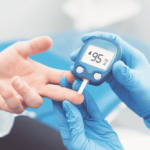Marie Curie pioneered research on radioactivity but she died from excessive exposure to radium. Legendary inventor Thomas Edison invented the fluoroscope but put a halt to its work when his assistant, Clarence Dally, died from being overly exposed to X-rays.
Despite the sacrifices of these amazing people who contributed largely to the advancement of the field of medicine, we often fail to handle radiation concerns safely yet we have a much-improved understanding of its dangers.
Radiation exposes not only patients but health workers as well. Radiation exposure is directly associated with health concerns such as cataracts, hair loss, and the development of cancers, the latter of which prompted the World Health Organization (WHO) to categorize radiation as a carcinogen.
As such, it is critical that hospitals and health facilities in general implement the best radiation safety measures.
1. Lead Curtains as a Radiation Shield
Lead curtains are an important method of shielding healthcare workers against radiation from X-ray devices. It is very easy for radiation from X-ray devices to scatter. Being able to stand directly behind lead curtains will diminish the scattered radiation thus serving as a barrier between the healthcare worker and the radiation produced from the X-ray device.
2. Regulating Security and Access
Regardless of the source of radiation you work with, be it materials, sealed sources, or x-ray machines, safety is maintained by making sure that everyone in the designated workplace is allowed access.
Any unfamiliar people without the proper clearance, the supervisor should find out their purpose of being there or otherwise, contact security.
3. Train the Healthcare Workers
An effective step to making healthcare facilities radiation safe is to ensure that everyone whose work involves radiation such as physicians, nurses, anesthesiologists, as well as equipment operators, enroll in a radiation safety program.
Learning radiation safety procedures at work should be a priority even if the workers involved argue they may not have the time to take the course.
For example, the state of California has made it mandatory for anyone involved in fluoroscopy to take a fluoroscopy class where they are given a permit after successful completion of the course.
4. Reducing Exposure Dose by Observing Time and Distance
The time a healthcare worker is exposed to an X-ray device must be kept at a low minimum. The amount of time a person is exposed to radiation is directly associated with the dose of radiation received.
For instance, it’s advised that a doctor sees a nuclear medicine patient before the patient is administered drugs and not after. Healthcare facilities should also consider the distance between the healthcare worker and the radiation source. The longer the distance the lower the exposure rate.
Radiation Is Important in Healthcare Provision but Also Very Risky
X-ray machines are used effectively in the diagnosis of patients in the healthcare industry. They must, however, be used with care. It is, therefore, important that all those involved in healthcare facility radiation workspaces have the best technical training and are able to cooperate for the safe use of X-ray machines.
The Editorial Team at Healthcare Business Today is made up of skilled healthcare writers and experts, led by our managing editor, Daniel Casciato, who has over 25 years of experience in healthcare writing. Since 1998, we have produced compelling and informative content for numerous publications, establishing ourselves as a trusted resource for health and wellness information. We offer readers access to fresh health, medicine, science, and technology developments and the latest in patient news, emphasizing how these developments affect our lives.







